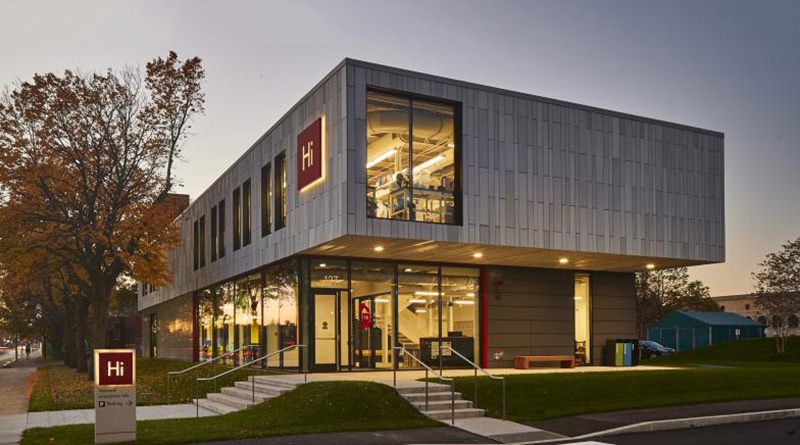Harvard University Debuts Pagliuca Harvard Life Lab

ALLSTON, Mass. — Harvard University hosted a formal dedication ceremony on Nov. 3 to officially open the new Pagliuca Harvard Life Lab in Allston. The two-story, 15,000-square-foot facility is the newest component of Harvard’s growing innovation and entrepreneurship ecosystem, creating much-needed space for life science ventures.
Designed by Shepley Bulfinch with offices in Boston, Houston and Phoenix, the building features modular construction and was completed in just seven months of construction. Shawmut Design & Construction of Boston served as the project’s construction manager. The project team also included civil engineer SLB Group of Stoughton, Mass.; structural engineer LeMessurier of Boston; MEP engineer R.G. Vanderweil of Boston; and geotechnical engineer Burlington, Mass.-headquartered Haley & Aldrich. The modular engineer was NRB Inc. of New Holland, Pa., and both NRB and Triumph Modular of Littleton, Mass., provided modular contracting services.
The lab’s mission is to provide Harvard students, faculty, and alumni interested in biotech, pharma and other life sciences-related fields with a fully equipped wet lab environment and resources they need to take their ventures to the next stage of development, according to a statement by Shepley Bullfinch. The lab is intended to foster connections among industry, investor, government and academic stakeholders. Situated next to the university’s Innovation Lab (i-lab), the new facility also will be an active contributor to the Harvard Innovation Labs ecosystem and the burgeoning Allston Innovation District.
“Life, in short, will be better because of this space and because of the creativity it will spark and the students, faculty and alumni it will bring together,” said Harvard University President Drew Faust in a statement. “The Life Lab represents some of our greatest hopes for what Harvard can achieve in the years to come.”

Photo Credit (all): Robert Benson Photography
The program is split with labs located on the second floor and office and write-up areas on the first floor in order to increase collaboration between lab users and other members of the teams. An open, interconnecting stair in the lobby provides a direct connection between the two floors and the two different types of spaces.
The second floor also features 30 six-foot wet lab benches alongside two tissue culture rooms, two fume hoods and a walk-in environmental cold room. In addition, there is a private 1,000-square-foot suite with six lab benches and a dedicated tissue culture room and fume hood. This suite is intended for larger and more experienced teams that can mentor and support the other start-ups.
To foster greater collaboration among teams, Shepley Bulfinch also designed an open office environment with 50 unassigned seats across traditional worktables, casual lounge seating and community tables. The space also features a range of writeable, magnetic and tackable surfaces to encourage interaction among users. An open floor plan on the first floor with moveable furniture allows the space to be used for different types of events, including guest speakers and workshops.
Built in a state-of-the-art controlled environment over a two-month period, the building’s 34 prefabricated modules were assembled offsite and installed on a traditional foundation system. The modules are steel framed, with composite concrete deck and sized based on shipping limitations of height, width and weight, according to a statement by Shepley Bullfinch.

